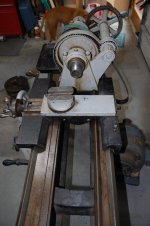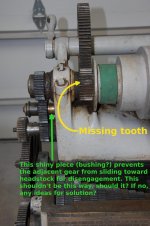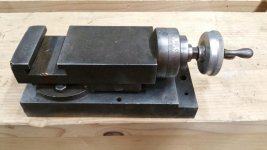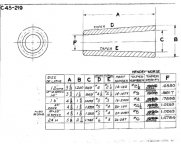fa_ember
Plastic
- Joined
- Sep 24, 2019
Greetings all. This is my first post here. I'm a woodworker who, in the process of restoring my old woodworking machines, realized how useful a metal lathe could be for various shop needs. I don't have experience with a metal lathe, and this Hendey is my first. I welcome any helpful information regarding the history of this lathe, including date of manufacture, etc., along with any advice and insight about getting it operational and using it. I have come across the one Hendey manual here for the tie-bar lathes, and I assume it will be closely applicable to mine.
The serial number in the bed of mine is 1750. In searching this site, I've never come across a Hendey lathe serial number that low before, so I'm wondering if there is even any information about this lathe. Hopefully hendeyman will come along and offer some information, as I understand he often does.
I know there are a two or three gears in the gearbox that have broken teeth, along with a broken tooth on the manual carriage advance gear, so I will be looking into how to repair those. Also, the gears on the outside of the headstock end were disassembled before transport by someone else, so I need to figure out how those go back on. I was told that this lathe has a plain tool rest that does not turn (is not "compound") and would like very much to figure out if that is, in fact, true, and if so, how much of a handicap that will be, or how can I change it to a compound tool rest.
One obviously critical thing I must do before I can begin using the lathe is to design and fabricate a countershaft assembly along with a matching stepped cone pulley, as I assume there's no chance of finding a Hendey motor drive system in "the wild." Advice and ideas on that are most welcome, too. I have acquired a Diehl 2 HP 3-phase motor that runs at 830 RPM and planned to use it with a VFD to drive the lathe.
Here are some photos:
The serial number in the bed of mine is 1750. In searching this site, I've never come across a Hendey lathe serial number that low before, so I'm wondering if there is even any information about this lathe. Hopefully hendeyman will come along and offer some information, as I understand he often does.
I know there are a two or three gears in the gearbox that have broken teeth, along with a broken tooth on the manual carriage advance gear, so I will be looking into how to repair those. Also, the gears on the outside of the headstock end were disassembled before transport by someone else, so I need to figure out how those go back on. I was told that this lathe has a plain tool rest that does not turn (is not "compound") and would like very much to figure out if that is, in fact, true, and if so, how much of a handicap that will be, or how can I change it to a compound tool rest.
One obviously critical thing I must do before I can begin using the lathe is to design and fabricate a countershaft assembly along with a matching stepped cone pulley, as I assume there's no chance of finding a Hendey motor drive system in "the wild." Advice and ideas on that are most welcome, too. I have acquired a Diehl 2 HP 3-phase motor that runs at 830 RPM and planned to use it with a VFD to drive the lathe.
Here are some photos:
























